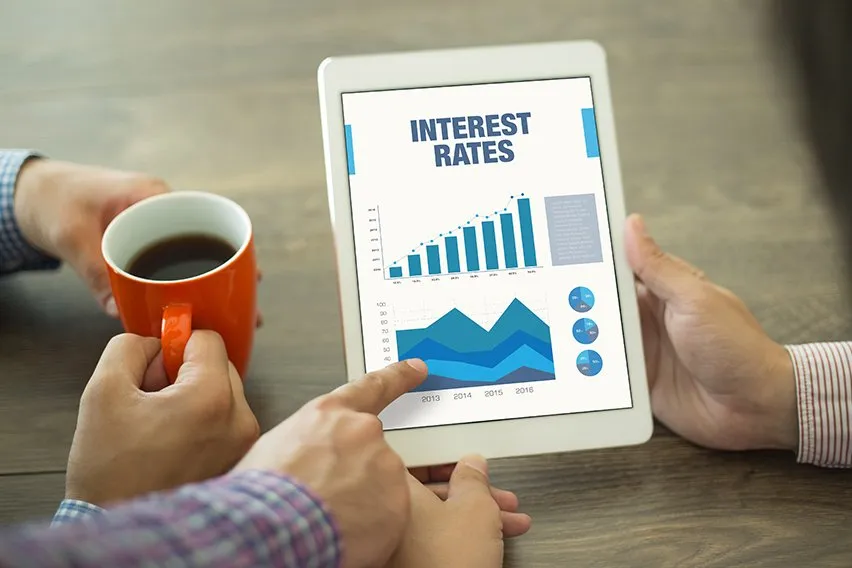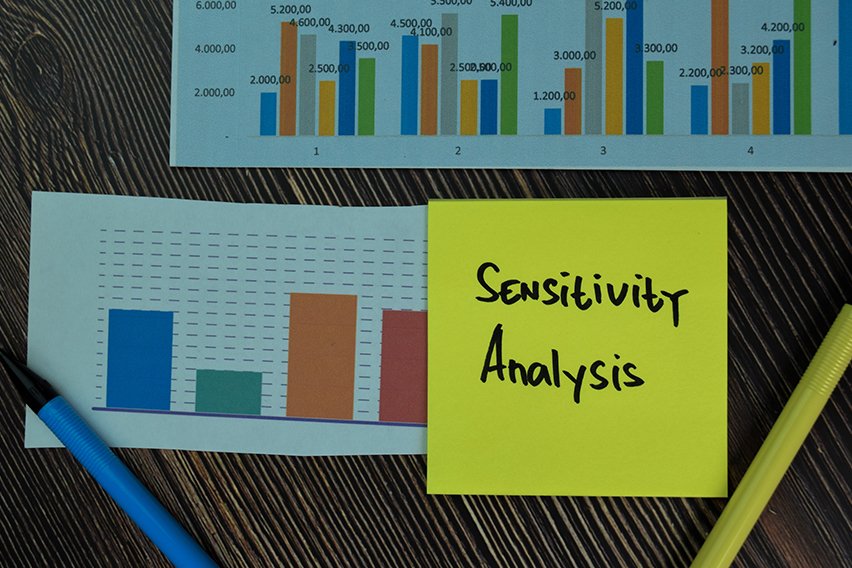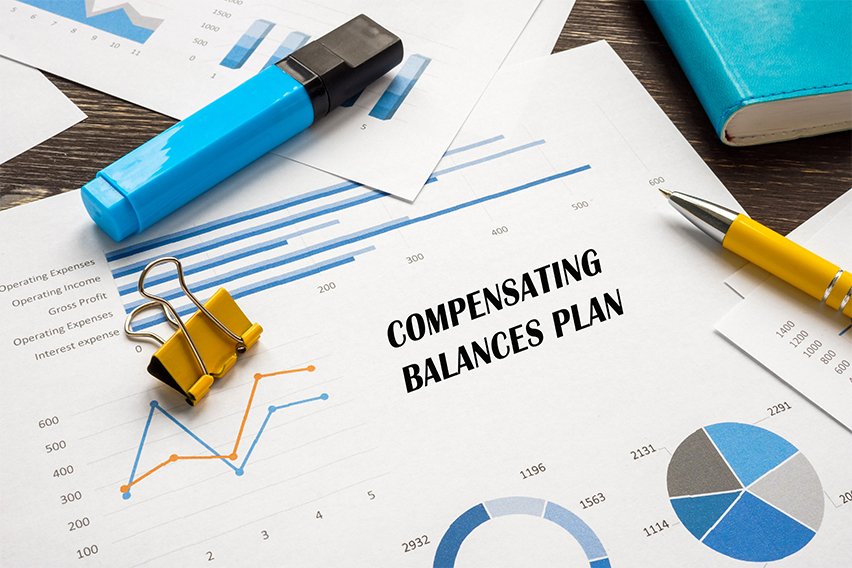What Is Interest Rate Parity (IRP)? An Overview

In the business world, it’s always useful to keep a keen eye on the wide range of financial metrics and exchange rates.
It’s a great way to spot opportunities or even just to better understand the financial landscape across the world.
One particular metric that is extremely important for any business is the interest rate. It’s a difficult thing to predict, yet there are a number of different theories and methods that do their best to.
One such method is known as interest rate parity. But what exactly is IRP?
We’ll take a closer look at the definition, the calculation and the uses of the interest rate parity in our detailed guide. So that you can use this information to better understand interest rates, and benefit yourself and your business.
Here’s What We’ll Cover:
What Are Currency Exchange Rates?
How Does Interest Rate Parity Work?
What Is the Difference Between Covered and Uncovered Interest Parity?
Why Is Interest Rate Parity Important?
What Is Interest Rate Parity?
Interest rate parity is a financial theory. It suggests a strong relationship exists between the movement of currency values and interest rates. With interest rate parity, you can predict what a future exchange rate will look like. This is done by simply looking at the difference in interest rates in two separate countries.
The main concept behind the theory is that it doesn’t actually matter how an investor exchanges their currency. An investor could put money in their home country, only to then convert those earnings to another currency. Or they could first convert the money and then invest it overseas.
This is because the interest rates and the currency rates are intertwined. So the investor will make the same amount of money whichever way they choose to convert.

What Are Currency Exchange Rates?
To properly understand the interest rate parity, you must first have a basic understanding of what currency exchange rates are.
Exchange rates are important for both business people as well as travellers.
If you’ve ever travelled to a country that uses a different currency, chances are you’ve had to first convert your currency into a different currency.
So for example, let’s say you’re travelling from Australia to the United States of America. You would currently at the time of writing be able to exchange $1 AUD to $0.73 USD. This would mean that the currency exchange rate is 0.73.
What Is an Interest Rate?
It’s also necessary to have a basic understanding of what an interest rate is.
The interest rate is the amount that a lender would charge a borrower for the amount loaned. It is calculated as a percentage of the principle. It is typically noted on a yearly basis which is known as the annual percentage rate, or APR.
Essentially, interest is a charge to the borrower for the use of an asset. These assets could include cash, vehicles, consumer goods as well as property.
So for example, let’s say that you took out a $200,000 mortgage from the bank. Your loan agreement states that the interest rate on the loan is 3%. This means that you will have to pay the bank the original loan amount of $200,000 plus the added interest.
That would be:
$200,000 + (3% x $200,000) = $206,000
So the total amount that you would pay back after taking a $200,000 loan with a 3% interest rate would be $206,000.
It’s also important to note that the exchange rate may differ from country to country. So whilst you may be able to get a 5% return on a treasury bond in the U.S., a similar bond in Australia may only yield you 3%.
How Does Interest Rate Parity Work?
The two key exchange rates in interest rate parity are the forward rate and the spot rate. The forward rate is the rate at which the bank agrees to exchange one currency for another in the future. Whereas the spot rate is the current exchange rate.
So let’s say that there is a spot exchange rate of 0.75 Australian Dollars for every U.S. Dollar ($0.75AUD/$1USD). This would mean that you could exchange $1,000 USD and receive $750 AUD.
If the interest rate in Australia is 3%, then you can invest $750 USD at 3% for the year. This would yield you $772.50.
Now let’s switch it up. Say that instead of exchanging your currency and investing it in Australia, you first invest the money in the U.S. and exchange it for Australian dollars in a year’s time. Let’s also say that the interest rate in the U.S. is 5%.
In this scenario, the exchange rate will be done as the forward exchange rate which is calculated using the difference in interest rates.
So in this case, the formula would be:
Forward Exchange Rate = (0.75 x 1.03)(1 x 1.05) = 0.736
So once we’ve rounded up, we can see that the total is 0.736.
Now let’s say that you start with $1,000 USD and invest it in the U.S. at 5%. This then results in $1,050 at the end of the year. You would then exchange that $1,050 at the forward exchange rate of 0.736 which would leave you with $772.80.
Essentially, you end up with the same amount of money as if you had exchanged your money first and then invested it in Australia. Just to note that the $0.30 discrepancy is due to us rounding up the total.
What Is the Difference Between Covered and Uncovered Interest Parity?
When talking about foreign exchange rates, both uncovered and covered interest rate parity is bound to come up.
Uncovered interest rate parity comes about when there are no contracts relating to the forward interest rate. Instead, the parity is based simply on the expected spot rate.
When it comes to covered interest parity, there is first a contract in place that locks in the forward interest rate.
Realistically, there is very little difference between covered and uncovered interest rate parity. This is because the expected spot rate and the forward spot rate tend to be the same.
The main difference between the two is that with uncovered interest parity you are simply predicting what rates will be in the future. Whereas with covered interest parity, you are locking in the future rates at the present time.

Why Is Interest Rate Parity Important?
If interest rate parity ceased to exist, then banks could end up exploiting the differences in currency rates in order to make easy money.
So for example, let’s say that you could pay $1.39 USD for an Australian dollar. Without interest rate parity, an American bank could lock in a one-year forward contract at that rate. It could then accept $1 million in deposits while promising a 3% return.
Using that $1 million, it could buy $730 Australian dollars and invest it in an Australian bank. If Australian banks pay a 5% interest rate, then the American bank could end up with $766,500 Australian dollars. It would then be able to convert that total back to U.S. dollars and end up with a total of $1,065,435, which would be a profit of $65,435.
If you scale that up to the larger numbers that banks often handle, you can see how that may become an issue rather quickly.
The interest rate parity theory is based on the idea that the returns on an investment are risk-free. Essentially, as in the examples we used earlier, investors are guaranteed 3% or 5% returns on their investments.
Truthfully, in reality there is no such thing as an investment that is completely risk-free. The world of investing is famously volatile and a wide range of events could occur that would destabilize the market.
But when the monetary systems and economies of countries are stable, any investor can be confident that the returns on treasury bonds are true. There are a large number of highly-rated countries that offer bonds that are considered risk-free. In fact, in the U.S., treasury bonds never default, so they are viewed worldwide as a risk-free investment.
Key Takeaways
Interest rate parity is an interesting and important financial theory that rests on a solid notion.
Without this theory, banks could take advantage of currency exchange rates to make a large amount of money from major currencies. It’s also incredibly useful information for investors to use when considering where to invest.
Are you looking for more business advice on everything from starting a new business to new business practices?
Then check out the FreshBooks Resource Hub.
RELATED ARTICLES

 Business Structures Advantages and Disadvantages
Business Structures Advantages and Disadvantages What Is Residual Value & How to Calculate It?
What Is Residual Value & How to Calculate It? What Are Franked Dividends & How Does It Work?
What Are Franked Dividends & How Does It Work? The Complete Guide to Ceteris Paribus
The Complete Guide to Ceteris Paribus An Overview of Sensitivity Analysis
An Overview of Sensitivity Analysis What Is Compensating Balance? Definition & Example
What Is Compensating Balance? Definition & Example